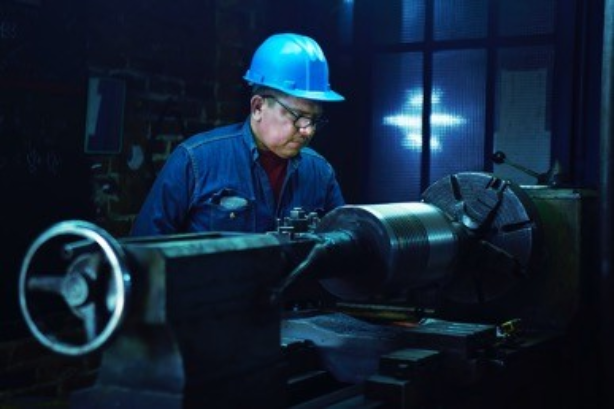The age old question of whether your invention or creation is patentable is one that unfortunately doesn’t have a simple answer. There are various factors to consider when determining patentability and the likelihood of patent acceptance, with things becoming slightly more complicated for patents of technological nature.
IP Australia is the ruling agency that administers intellectual property rights and legislation for patents, trade marks, design rights and plant breeder’s rights, with strict application guidelines applicable. This is who your application will be ultimately submitted to for processing.
Criteria
A patent application is applied to a standard criteria in order to determine patentability:
-
- You need to determine whether your invention is a ‘tangible invention’, i.e. it can’t be for an idea, scheme or purely mental process.
- The invention must also be novel, which means:
- It has not been publicly disclosed in any form, by you or by anyone else;
- There must not be a same or materially similar technology currently in the public domain.
This may be one of the biggest risk factors when it comes to determining the patentability of your technological invention. Whilst you may feel confident that you have not brought it into the public domain, there may be something similar to it currently on the market. Figuring this out on your own is harder than it seems, as an in-depth research analysis is required in order to properly determine this. You need to be sure that your invention is novel and dissimilar to anything else, even on a global scale. In the current age of consumerism, markets move quickly, and idea theft is very common.
- Standard patents also require an ‘inventive step.’ This means that it must not be an obvious thing to do for someone with knowledge and experience in the technological field of the invention. It will ultimately depend on whether your invention is novel or not, and whether something just like it already exists on the market.
- Another requirement is that the invention must be useful, whereby it delivers and produces the results that are promised.
- Finally, the invention must not have been secretly used by you or by someone else with your consent.
Although you may have a great technology focused invention or creation on your hands, which you understandably want to protect, how do you figure out just how likely patentability is?
Below we’ve set out the points you need to consider and start thinking about, before lodging a formal application.
- Firstly, consider whether there is something materially similar to your invention, of which is either:
- Already in the public domain; or
- Otherwise under patent application.
- Secondly, is the invention taken to be an improvement to an existing technology that it will interface with (i.e., hardware, etc).
Computer Software Patents
When it comes to computer software related patents, the software must be taken to be an ‘improvement in the computer’. This generally means that the software enables the computer to perform an activity which was not possible to perform prior to the software being invented. There is however an important distinction here between performing an activity which was previously not possible, as opposed to previously unavailable. To put it simply:
- The software is likely to be eligible for patentability if it enables the computer to do something which, prior to the software, could not be done. Examples of such improvements could include:
- Increasing the speed or efficiency of the underlying computing device;
- Reducing the processing requirement or memory usage of the underlying computing device;
- Increased security; or
- Improved computer network communication and/or operation.
- The software is unlikely to be eligible for patentability if it enables the computer to do something which, prior to the software, could be done, but was not done. An example being:
- A messaging app that provides a more modern look and feel through the implementation of a new layout or different colour schemes.
Ultimately, whether an invention is deemed patentable or not is a question of whether the software you are developing will enable the applicable technology to do something that would not be possible without the invention. This is a technical question which requires close analysis.
Commercial Considerations
As well as considering the patentability of an invention, the commercial advantages and disadvantages to patenting should be also considered.
The commercial advantages of patenting include:
- Giving you the exclusive right to protect and commercialise your invention. This means that during the patent period, you’ll have the legal ability to prohibit others in Australia from manufacturing your invention without your permission.
- You will have the option to licence your invention to others for a fee.
- It allows you to lawfully restrict competition; and
- Creating a patent increases credibility and is attractive to potential investors.
The commercial disadvantages of patenting include:
-
- Patenting is generally a lengthy and expensive process, and it can often take years and thousands of dollars for a patent to be granted. For startup ventures, it is often the case that the resources expended to file a patent application are better expended in getting the product to market, bringing on first customers, and raising investment.
- It should also be noted that in rapidly developing technological spaces, such as artificial intelligence, virtual reality or augmented reality, it can often be the case that the technology has become obsolete or surpassed by the time the actual patent is granted. Registering a patent with IP Australia is often a lengthy process and can take at least 6 months to be processed.
Provisional Applications
Noting the above commercial considerations, and the question as to whether the invention constitutes an ‘improvement in the computer’, one option may be to make a provisional patent application.
A provisional patent acts a placeholder, giving you a 12 month window to decide whether you want to bring a full patent application forward. This allows you to thoroughly engage with your customers and investors in the meantime to help you come to a decision. It gives you a window to determine the patentability and commercial advantages of making a full patent application, without causing your commercial activities to stagnate.
Patenting your technology is a process that can take quite some time, but it’s worth it in the end if it means your invention is protected. If you think you have a patent worth protecting, reach out to us now for a complimentary 30 minute consultation. You can connect with us on 03 8691 3111 or by sending us an email at hello@alliedlegal.com.au.





